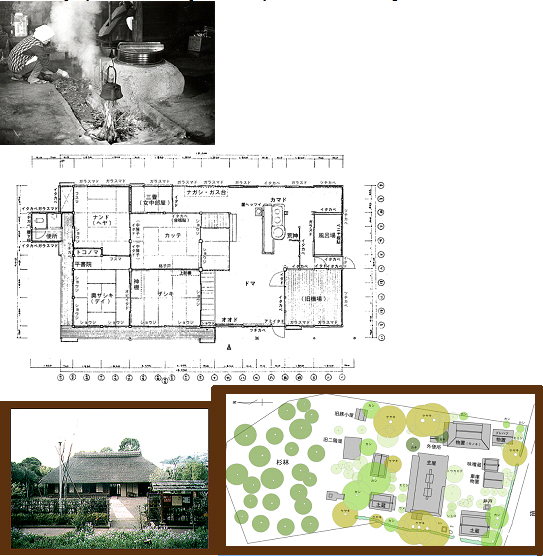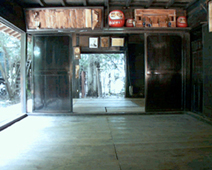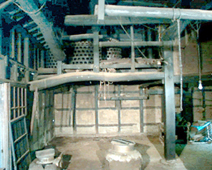
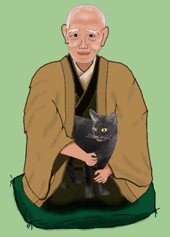
TOPICS
NE
Kiyose City.
International Cooperation Section of the Research Institute of Tuberculosis belonging to Japan Anti-Tuberculosis Association is located in Kiyose city. Kiyose has many hospitals and is called “the town of medical treatment.” The reason for such nickname relates the Great Kantou Earthquake which occurred in September 1, 1923 and caused in the death and missing of more than a hundred thousand people.
The central region of Tokyo was almost destroyed many people are supposed to move to suburbs. Forests were extensively cleared and turned into residential area. But the reconstruction of central Tokyo had been progressed and ceased in seven years. Broad empty areas were left in suburbs.
One of the big social problem was the public health especially tuberculosis and leprosy. The area planned for residential zone was thought to be adequate for sanatoriums with the environment surrounded by forests. The hospitals specialized in tuberculosis were invited to suburbs, and then other kinds of hospitals followed.
Tuberculosis is transmitting disease. Opposing opinion occurred among residents. Those problems were overcome and a college for pharmacy and a nursing school were built. Now Kiyose is blessed with the medical care. The city is arranged in the harmony between nature and life.
We have “Shiki-kaido,” a traditional route lined with big zelkova trees. But trees were cleared for the purpose of widening the road. Now city replant zelkova trees along newly opened road and also arranged the works of sculptors in the intension to rebuild the lost traditional landscape in the harmony with modern society.
This “Keyaki-dori(zelokova-street)” has the location of the technological research facility of the company which built Tokyo Sky Tree and the artist living in Kiyose has related to its designing.
Thus Kiyose has both of the most advanced facilities as in medical and construction technology and traditional culture. “Shitajuku” region, in eastern Kiyose, especially keeps the traditional landscape.
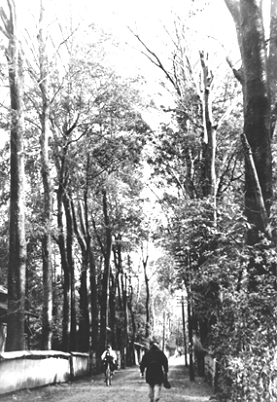
Japanese way of thinking and tradition event.
Most Japanese are polytheists and their process of thinking is unique. They give the impression of kindness, safety and politeness to travelers from foreign countries. It is explained through the history woven with the climate and nature of Japanese land.
Japan`s land is morphologically complex and climate significantly differs in each region. Culture varies beyond the natural boundaries like mountain and river and it makes the appearance that small states unite together into one country. The persistence to one opinion invokes a dispute in such a circumstance. People avoid dispute by respecting different opinions and admitting different beliefs and then formed an affluent culture.
Japanese attitude to avoid disputes relates to its environment where natural disasters are frequent. Japan has four seasons. Storm, lightning, heavy snow, hailing, typhoon and drought occurs periodically and the sudden disaster like tsunami, eruption, and earthquake are impossible to resist. The reason which Japanese avoids disputes is because they confront the natural disasters. The recovery from the disaster needs cooperation of communities. Disputes result in the tragedy. History shows the many examples. People do not know when a disaster comes.
The frugalness represented in the word “Mottainai”, and the reception in “Omotenashi” reflect the Japanese mind to make fruitful relationship with others.
The historical evidence showing the routes of such Japanese thinking was unearthed in Kiyose through the archaeological work. It is the designs and motifs of the Jomon earthenware of 4,000 years ago which was left by people who made a life in the land of Kiyose for 500 years.
The designs show the thinking of the people who made a living in the harmony with the environment facing natural disaster. It was entangled through the analysis of designs depicted in several hundreds of potteries that Jomon people achieved the high level of conception of time and space formed in the four circles and a cross and reached the conception focused on the human relationship as presented in the word “Yui.” The affluent thinking process of ancient people who lived in the harmoniously with nature, although it was lost in modern societies, is depicted in Jomon pottery. It is necessary to investigate the ancient mind to admit the mind of various ethnic groups and coexist together in next generation.
Japanese are one of the rare examples which have not lost the ancient mind and flexibly absorbed foreign culture then handed it down to the highly industrialized society.
There is a belief that a deity stays even in a stone or glass and tree besides a trail. And each deity has dual aspects of evilness and goodness. A same deity is thought to give disaster to people if they behave badly and help people if their behavior is good. Deities are recognized as like a mirror which reflects the behavior, manner, and thinking of people. This thought makes Japanese people`s behavior self-controlled to avoid becoming a riot at disaster.
People have tried to receive the harvest from deities by working honestly and to adjust the relationship with nature and deities by correcting behavior when they confront disasters. It makes people diligent.
There is a traditional ritual called “Fusegi” in Shitashuku region, Kiyose. A big snake made of straw is worshiped on the road at the border of village. It is held every May, just before the agricultural activities get busy.
Villagers consider snake as messenger from a deity like hermes in Greek myth. The power of snake to harm people is expected to prevent diseases and evil deities from intrude into a village. They are trying to pull out the good aspect from the duality of a deity by pleasing it and then turn it to the good existence to protect a village. Rituals are the contracts between people and deity for a year, which make a deity to insure the health and harvest.
The mind formed by Japanese to remove harmful intension and to pull out good spirits from the duality of evilness and goodness held by a deity let people expect good aspect in other people through the polite and kindly attitude to them.
Japanese way of thinking is flexibly constructed as to consider the background of matters or people. This unique thought constructed in facing natural disasters makes people to absorb knowledge and techniques from foreign countries, apply them in broader matters, and develop them into new technologies. The traditional way of thinking by Japanese people commits to the development and distribution of sophisticated medical technology.
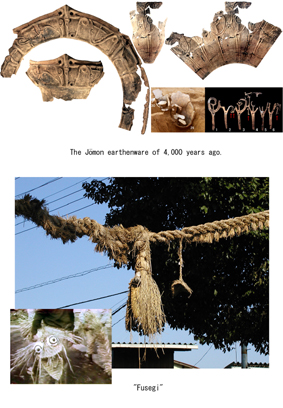
Traditional house in Kiyose City.
This traditional house was built in the early 19th Century. It was a wooden building with a thatched roof. For the construction of the house, wooden pillars were joined with tenon and mortise without nails. Outer wall is soil wall.
The doorway leads into the earth floor of the house. This part is called “doma” in Japanese. “Doma” was an important work space for making various daily nesessaries. Most of them were made with straw. Straw is regarded as a waste in Europe and America. But Japanese farmers made various (life) tools with straw, such as rope, raincoats, sandals, hats, and keep warm tools.
On the opposite side of the “doma”, there are four rooms. Two rooms on the south side are a living room and a drawing room. These rooms are covered with “Tatami”. Two rooms on the north side are a storeroom and a kitchen. These rooms have (wooden) flooring.
There are a Buddhist alter and a household Shinto alter in the living room. Family members prayed to continue peaceful days to ancestors and gods.
